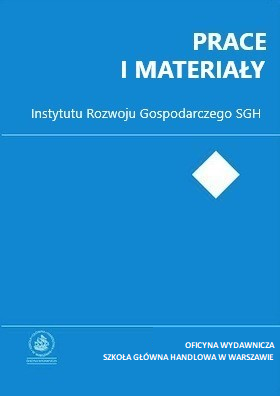Mapping the respondents' assessments in business tendency survey using the Viterbi paths
Main Article Content
Abstract
In the paper we propose to use the so-called Viterbi paths for mapping relationships between survey data. The Viterbi path is the most probable sequence of states of a hidden Markov chain in a Markov Switching model (MS). The approach is widely taken to recognize speech or to analyze DNA, but is almost absent in econometrics, despite the great role MS models play in non-linear modeling. The main advantages of the Viterbi paths are: (1) intuitive interpretation of results they give and (2) their wide applicability. They have, however, some disadvantages too. It turns out that the models we have built do not necessarily fit to business tendency survey data, and the interpretation of the hidden states might be unclear.(original abstract)
Article Details
References
Bell, W. (1984). Signal extraction for nonstationary time series. Annals of Statistics, 12(2): 646-664.
Bernardelli, M. (2013). Non-classical Markov models in the analysis of business cycles in Poland. Roczniki Kolegium Analiz Ekonomicznych SGH, 30: 59-74.
Bernardelli, M. (2015). The procedure of business cycle turning points identification based on hidden Markov models. Prace i Materiały Instytutu Rozwoju Gospodarczego SGH, 96: 5-23.
Bernardelli, M., Dędys, M. (2015). Przełącznikowe modele Markowa w analizie synchronizacji cykli koniunkturalnych. Roczniki Kolegium Analiz Ekonomicznych SGH, 39: 213-227.
Bernardelli, M., Dędys, M. (2014). The Viterbi path of hidden Markov models in an analysis of business tendency surveys. Prace i Materiały Instytutu Rozwoju Gospodarczego SGH, 96: 25-47.
Boldin, M. (1994). Dating turning points in the business cycle. Journal of Business, 67(1): 97-131.
Cappe, O., Moulines, E., Ryden, T. (2005). Inference in hidden Markov models. Nowy Jork: Springer.
Chauvet, M., Hamilton, J. D. (2005). Dating business cycle turning points. NBER Working Paper Series, 11422.
Harding, D., Pagan, A. (2002). A comparison of two business cycle dating methods. Journal of Economics & Control, 27(9): 1681-1690.
